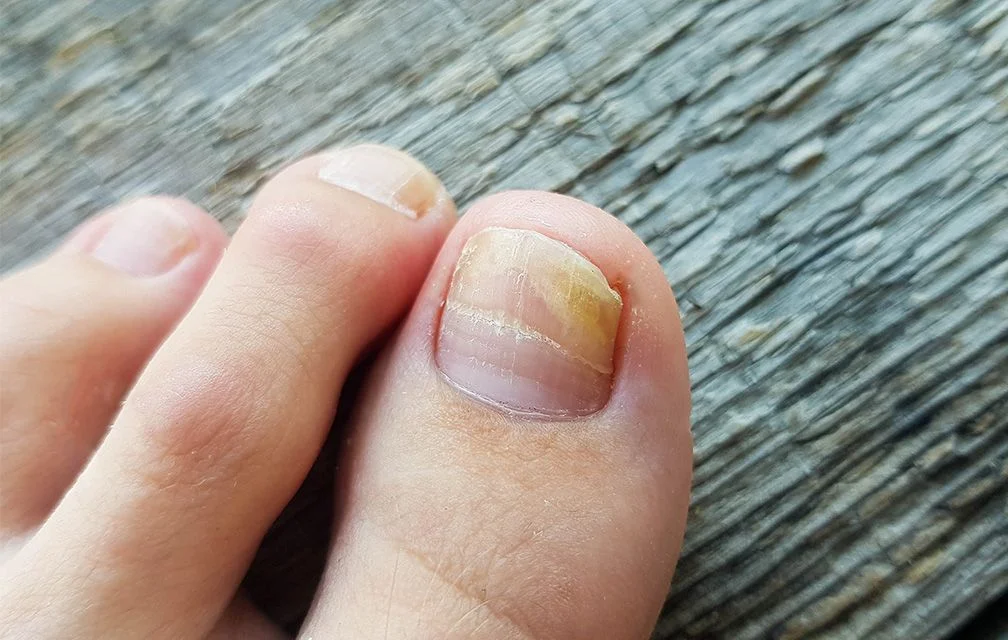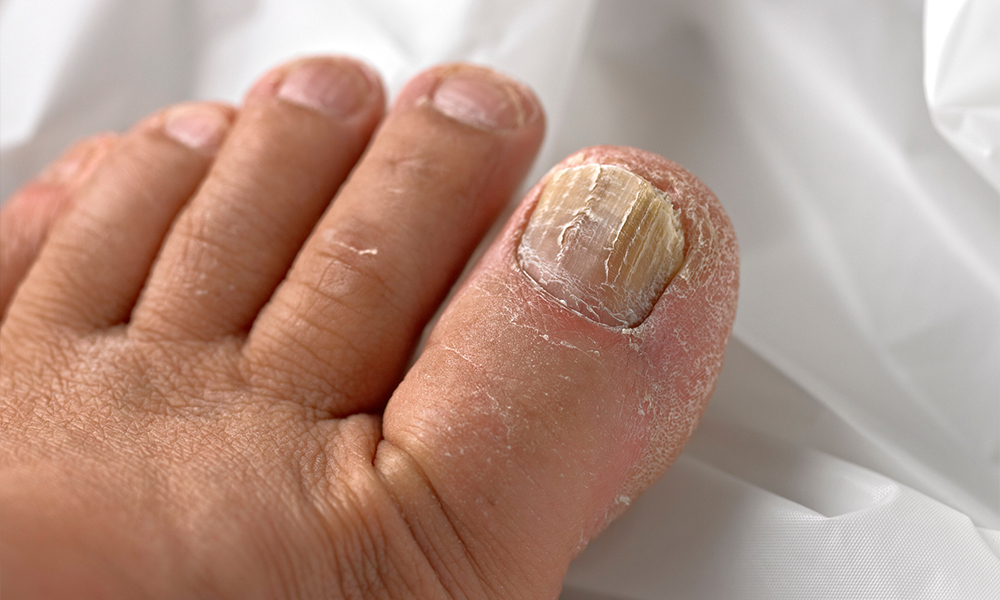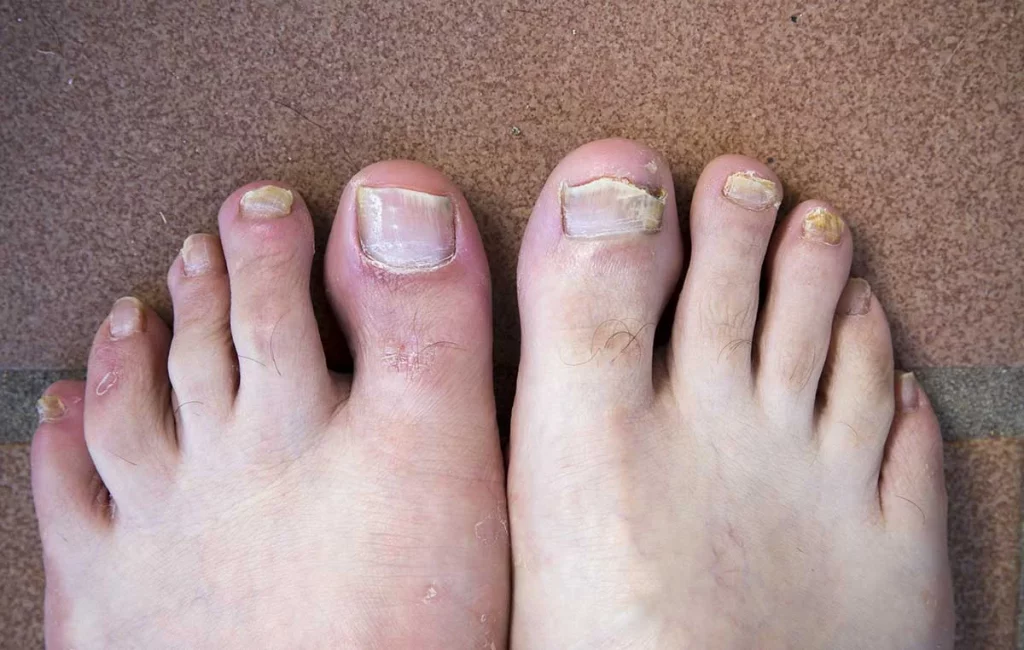
Diabetic Nail Fungal Infections: Causes, Complications, and Management
You, as a diabetic, are well-acquainted with the many difficulties associated with controlling your disease. One typical but sometimes disregarded consequence is onychomycosis, or nail fungal infections.
You, as a diabetic, are well-acquainted with the many difficulties associated with controlling your disease. One typical but sometimes disregarded consequence is onychomycosis, or nail fungal infections. This all-inclusive book will delve into the causes, consequences, and effective management techniques of nail fungus as it relates to diabetes.
Understanding the Connection

High blood sugar levels are the hallmark of diabetes, a metabolic disease that can affect many parts of a person’s health. An elevated risk of fungal infections, particularly those affecting the nails, is one of the less obvious side effects. Let me explain:
- Compromised Immune System: Diabetes can lower your body’s immune system, making you more susceptible to infections, especially fungal infections. The warm, damp conditions of your nails are ideal for the growth of fungal spores, and this facilitates their acquisition.
- Poor Circulation: Diabetic foot symptoms include decreased blood flow to the extremities. Your nails may become more susceptible to fungal infections if this prevents oxygen and vital nutrients from reaching them.
- Nerve Damage: Diabetic neuropathy, also known as nerve damage, is a frequent consequence that can hinder your sense of touch and make it harder to identify foot and nail infections or injuries. If left untreated, a fungal infection can worsen and cause other health problems.
Recognizing the Signs
Signs of a nail fungal infection might vary, however some common ones include:
- Discoloration: Spots or streaks of yellow, brown, or white could appear on your nails.
- Thickening: Nails affected by this condition may thicken, become more brittle, and crumble more easily.
- Distortion: Your nails could get more rounded, ridged, or even fall out of their nail beds if you experience distortion.
- Foul Odor: You might notice a musty odor coming from your nails as the infection advances.
Untreated nail fungal infections can cause more significant consequences, particularly for people with diabetes, therefore it’s vital to get medical help promptly if you have any of these symptoms.
Potential Complications

Nail fungus infections are more than just an unsightly annoyance; they might worsen diabetes complications. You should be aware of the following possible complications:
- Cellulitis: If a fungal infection persists and breaches the skin’s protective barrier, a potentially dangerous bacterial skin infection called cellulitis can develop.
- Foot Ulcers: Nail fungus infections can exacerbate the symptoms of foot ulcers, a common consequence of diabetes that is notoriously hard to cure.
- Bone Infections: Osteomyelitis occurs when a fungal infection spreads to the underlying bone and necessitates urgent treatment.
- Amputation Risk: Severe nail fungal infections, if ignored, can raise the risk of amputation of the foot or toe, especially in diabetic individuals who already have compromised circulation and nerve damage.
Effective Management Strategies
To one’s relief, a number of choices exist for the appropriate management of diabetic nail fungal infections. However, in order to create a tailored treatment plan that considers your general health, medication schedule, and individual requirements, it is crucial to confer with your healthcare practitioner.
Oral Antifungal Medications
When other treatments fail to eradicate chronic nail fungus, prescription drugs like terbinafine or itraconazole are frequently prescribed as a last resort. These treatments are effective in eradicating fungus from the inside out. However, it is important to closely monitor your progress because they can combine with other prescriptions or cause negative effects.
Topical Antifungal Treatments
You can apply topical antifungal solutions, lacquers, or lotions directly to the damaged nails for milder cases or as an addition to oral treatments. While these can aid in fungal elimination and prevention, they might not work as well for more severe or persistent infections.
Laser Therapy
Modern methods of treatment, such laser therapy, target the nail’s fungus cells with concentrated light beams, heating them to death. Compared to oral drugs, this non-invasive method may be safer and more effective.
Surgical Removal
In extreme circumstances where non-surgical methods have been exhausted, or in patients who are particularly vulnerable to consequences, surgical excision of the diseased nail may be suggested. Nail avulsion is a method of applying topical antifungal medicines straight to the nail bed; it can be done while the patient is under local anesthesia.
Preventive Measures
To reduce the likelihood of nail fungal infections or their recurrence, it is essential for diabetics to take preventative measures in addition to therapy. Some examples are:
- Proper Foot Care: The best way to keep your feet and nails free of fungus is to inspect, clean, and dry them on a regular basis.
- Antifungal Powders or Sprays: Applying an over-the-counter antifungal powder or spray to your feet, socks, or shoes can help prevent the spread of fungal spores.
- Proper Footwear: Invest in a good pair of shoes and socks that wick away moisture to keep your feet dry and mold-free.
- Blood Sugar Control: Keeping blood sugar levels in a healthy range through a combination of food, exercise, and medication can help build immunity and lessen the likelihood of infections.
Frequently Asked Questions (FAQ)
1. Can nail fungal infections be cured completely?
Although nail fungal infections are treatable, the percentage of patients who have a full recovery varies. Fungal infections can sometimes linger or return, particularly in those whose immune systems are already weak, such as diabetics.
2. How long does it take for a nail fungal infection to clear up?
The period of treatment can differ according on the infection’s severity and the approach selected. The infected nail must grow out entirely before the effects of oral antifungal medicine become apparent, which could take several months.
3. Are nail fungal infections contagious?
It is true that nail fungus infections can be transmitted from person to person or through shared objects such as towels or nail clippers. To lessen the likelihood of transmission, practice good hygiene and don’t exchange objects.
4. Can I paint my nails or use artificial nails if I have a fungal infection?
For the best results in treating your illness, it’s best to avoid using nail polish or fake nails for as long as possible. These products can trap moisture and foster the spread of fungi.
5. Can diabetic neuropathy make it harder to detect nail fungal infections?
Yes, diabetic neuropathy, also known as nerve loss, can reduce foot sensation, making it hard to detect nail fungus infections in their early stages.
Final Thoughts
Although nail fungal infections aren’t a big deal for people without diabetes, they can cause major complications if left untreated. Protect your general foot health and avoid further difficulties by learning about the signs of nail fungus and diabetes, how to recognize them, and how to manage them effectively. If you see anything strange happening to your nails, don’t hesitate to see a doctor. Early diagnosis and treatment are crucial.
